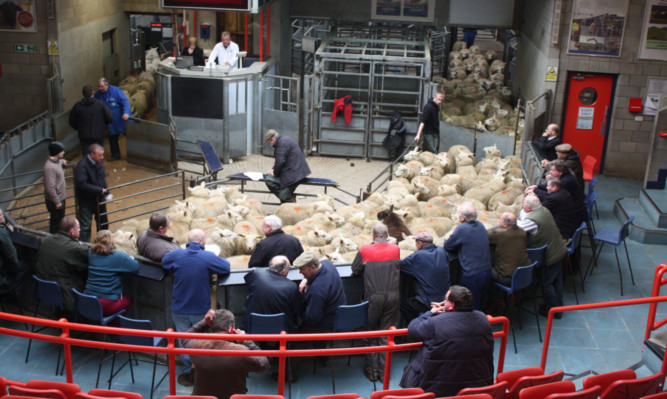Despite the strength of sterling, Scottish producer prices for hoggs are being supported by a tightening of supplies in the UK and across the major European sheep-producing nations.
According to the latest analysis by Quality Meat Scotland (QMS), between last June and the end of this January UK abattoirs handled almost 470,000 more prime sheep than last year, a rise of 5%.
“During January alone, the UK hogg kill was 8% higher than in 2014 although Scottish supplies were tightening and Scottish abattoirs handled nearly 3% fewer hoggs in January,” said Stuart Ashworth, QMS head of economics services.
“Auction market throughputs for February suggest that hogg supplies have tightened further, with English and Welsh auction throughputs falling below last year’s levels and Scottish numbers continuing below year-earlier levels.
“Carcase weights continue to be heavier than last year, and so the tonnage of lamb meat continues to run well ahead of last year,” said Mr Ashworth.
The slaughtering of mature sheep continues to be well below year-earlier levels.
June-to-January cull ewe and ram slaughterings are reported to be almost 16%, (225,000 head) lower than last year, and in January alone the kill was nearly 24% lower, said Mr Ashworth.
“A decline of this scale is likely to be helping prices of heavy hoggs, but also suggests an increase in breeding sheep numbers for the 2015 lamb crop,” he added.
Although the prime sheep slaughter numbers are well up they would, when related to census data, suggest there could be a further 100,000 hoggs more than last year in the system.
“Equally, however, many of these may be being retained for future breeding to support some growth in breeding sheep numbers, and the tightening of market supplies offers support for this option,” said Mr Ashworth.
Hogg numbers have also tightened in Ireland, where the kill since the start of the year has been nearly 3% lower than last year, again helping to support farm-gate prices.
Meanwhile in France the hogg kill in January was 1% lower than a year ago.
European prices are consequently currently higher than last year, up in general more than 5% on the year in most major producing countries.
“In contrast to the European market the New Zealand market is currently under some pressure.
“After a slow start, drought conditions in several parts of New Zealand have seen a major rush of lambs into plants,” said Mr Ashworth.
“New Zealand slaughter statistics show a 35% increase in January slaughter numbers and an 11.5% increase since the start of the season.
“Setting these numbers in the context of Beef and Lamb New Zealand’s early forecasts of the lamb crop being unchanged, then New Zealand supplies must be expected to tighten as the year progresses.”
However, in the short term, he said, New Zealand is finding it hard to grow export volumes to China, and a dock strike on the United States west coast, now ended, slowed down trade there.
The consequence of this is that New Zealand lamb prices have come under pressure, falling around 10% since the turn of the year in national currency and sitting around 8-9% lower than a year ago.
“As a result there is some potential for increased deliveries to Europe in the short term rather than stock building in cold stores in New Zealand.”
